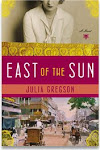'Trick or Treatment': Alternative therapy study
Sunday, August 24, 2008
By Simon Singh and Edzard Ernst
Norton; 342 pages; $25.95
When it comes to alternative medicine, what you don't know can be bad for your health.
Who hasn't sprinted to the vitamin aisle or the herbal supplement store at the first sign of flu, fatigue or sleeplessness? Alternative medicine may not be what the doctor ordered, but Americans are increasingly staking their health on therapies for which the distinction between credibility and quackery is far from clear.
Simon Singh and Edzard Ernst sort fact from hype in "Trick or Treatment," their detailed analysis of alternative medicine, past and present. Singh is a journalist with several science books to his name; Ernst is a medical doctor with decades of research on complementary medicine under his belt. In short, a perfect team.
"Trick or Treatment" broadly defines alternative therapies to include any health intervention that is outside of mainstream medical practice. However, its goal is much more specific. Unflinching in its commitment to evidence-based science, the book aims to offer the last word on the effectiveness of more than 30 common therapies - from ear candling to colonic irrigation.
Singh and Ernst's swift and summative appendix, "Rapid Guide to Alternative Therapies," will appeal to readers who are looking for an authoritative quick fix to confusion. The authors review the origins of a multitude of therapies, how they are practiced, what research has been conducted, and which ones they recommend, dedicating one page to each therapy. For as much as we are assaulted by claims of fast cures and easy answers, it would be tempting to flip furtively through the appendix at the local bookstore. But this would be to miss the point of the book entirely.
"Trick or Treatment" is as much a primer for critical thinking about health decisions as it is anything else. To this effect, the authors plead with readers to take the time to explore the book's first chapter, for good reason: Framed around the fascinating dual histories of bloodletting and the race to cure scurvy, Chapter 1 introduces the book's quintessential question: "How Do You Determine What Is Truth?"
For Singh and Ernst, the answer is simple: scientific method. Good science - and, by extension, good health decisions - are those made after careful review of studies that are randomized and double-blind, that employ identical conditions for both control and treatment groups, and that take into account what we know about the placebo effect. Through compelling case studies, the authors demonstrate why - despite its long history and devoted followers - alternative healing must be held to the same, strict research practices that are dominant in conventional medicine.
"Trick or Treatment" walks readers through existing studies on four well-known but nonetheless disputed practices: acupuncture, homeopathy, chiropractic therapy and herbal medicine. The authors offer examples of why research on alternative medicine has been so elusive and so difficult to test. How do you create needles and needling techniques that mimic acupuncture in control groups? And how does that help to explain the wildly differing conclusions regarding acupuncture's effectiveness across studies?
Each chapter also reminds us that past and present are inseparable. Singh and Ernst use page-turning stories from the history of medicine to frame their presentation of when and why each treatment came into being and how it is believed to work. This historical lens provides new ways of looking at the strengths - but more often, the limitations - of the way we understand, use and abuse complementary medicine in our own era.
While Singh and Ernst clearly lean toward the side of skeptics when it comes to many alternative treatments, their respect for proponents of alternative medicine - and their readers more generally - is evident throughout. Why is it, the authors ask, that smart people believe the oddest things? In this question lies a welcome assumption: Readers are smart. And this diagnosis sets "Trick or Treatment" apart from the multitude of books about alternative medicine on the market today. {sbox}
Holly Tucker is associate professor of Medicine, Health & Society and French Studies at Vanderbilt University. E-mail her at books@sfchronicle.com.
This article appeared on page M - 3 of the San Francisco Chronicle

Take a peek at my latest review in the San Francisco Chronicle.









